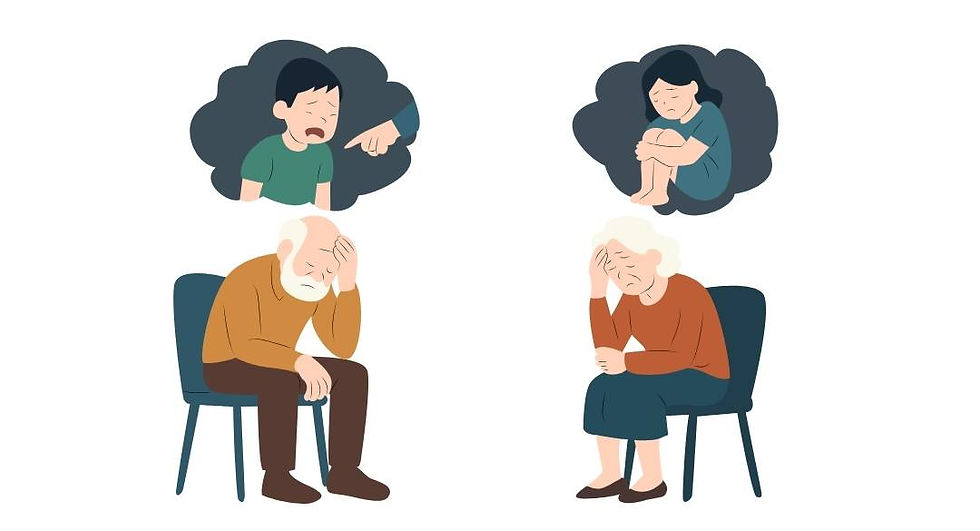Taking care of your Nervous System: 4 Nature-based Regulation Practices
- annabellalipson
- Jun 23
- 3 min read

As the weather warms and nature begins to bloom around us, we have a unique opportunity to support our emotional health by reconnecting with the outdoors. For individuals working through trauma, anxiety, or emotional dysregulation, nature can be more than soothing—it can be regulating.
Grounding techniques help us reconnect with our bodies and surroundings when emotions feel intense or overwhelming. From a polyvagal perspective, grounding helps shift the nervous system out of fight, flight, or shutdown, and into a more regulated, socially engaged state. From a DBT lens, grounding is a key part of distress tolerance and mindfulness—building awareness and resilience without judgment.
Here are 4 simple, nature-based grounding practices you can use to regulate your nervous system and stay connected to the present moment:
1. Engage Your Five Senses Outdoors using the 5-4-3-2-1 Method
Find a quiet space outside—a garden, a bench in the park, or a trail. Use your five senses to anchor yourself in the here and now. Slowly name:
5 things you can see
4 things you can feel (e.g. breeze, grass, sun)
3 things you can hear
2 things you can smell
1 thing you can taste (or imagine the taste of fresh air or mint tea)
Sensory awareness helps calm the nervous system and orient you in the present, which supports regulation and safety. It’s a way to stimulate the social engagement system in the brain.
2. Co-Regulate with Nature
Sit near a tree, stream, or patch of flowers. Let yourself simply be with what’s around you. Notice the gentle rhythm of nature—branches swaying, birds calling, water flowing. Take a few deep breaths, imagining your body syncing with this rhythm.
In Polyvagal Theory, co-regulation isn’t just between people—it can also happen with calming environments. Nature’s predictability and movement can help re-pattern the nervous system toward regulation.
3. Use Cold Water or Texture from Nature
If you’re feeling overwhelmed or emotionally flooded, try dipping your hands in a cold stream, running water from a drinking fountain, or holding a cool stone. You can also place a cold object on the back of your neck or splash cold water on your face.
Rapid temperature changes can stimulate the dive reflex, slowing your heart rate and engaging the parasympathetic nervous system. This DBT skill helps bring you back to a window of tolerance quickly.
4. Ground Through Movement
Take a mindful walk in nature. With each step, notice how your body moves. Feel your feet on the ground. Pay attention to the pace of your breath and how your arms swing naturally. Try syncing your breath with your steps: inhale for 3 steps, exhale for 4.
Gentle movement helps discharge excess sympathetic energy (fight-or-flight) and builds connection to your body. Polyvagal-informed practices encourage movement to shift out of freeze states and into regulation.
___________________________________________________________________________________
Grounding doesn’t have to be complicated. These small practices, when done regularly, help build a more resilient and regulated nervous system. If you notice resistance, that’s okay too—just starting with one moment of connection to nature is enough.
At Peaceful Living, we’re here to support your healing in ways that honor your body, your pace, and your story.
Spring is a time of growth and renewal—and your nervous system is capable of healing, one grounded breath at a time.
About our Scarsdale EMDR Therapist Annabella Lipson

Annabella Lipson is a Licensed Mental Health Counselor at Peaceful Living Mental Health Counseling in Scarsdale, NY.
She enjoys working with young adults & adults who are dealing with grief, constant sadness, anxiety, PTSD and other heavy emotions that make it difficult to enjoy the present moment.
Annabella has an innate ability to make her clients feel comforted and cared for as they confront their grief and loss. She incorporates a combination of Cognitive Behavioral Therapy (CBT), Dialectical Behavior Therapy (DBT), EMDR Therapy, Ego-state Interventions and Mindfulness practices in her counseling sessions.




Comments